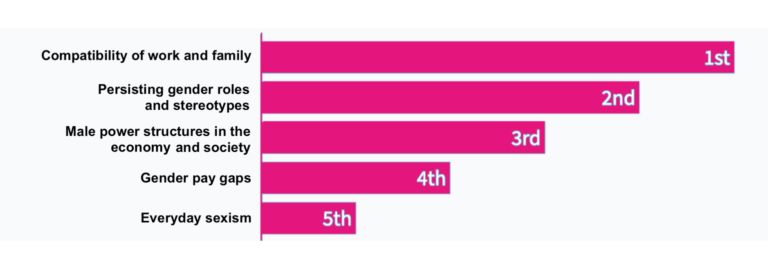


Read our Convoco thinkers’ thoughts on the topic:

Gender equality is a topic that countries globally are seeking to protect. But despite these efforts, a McKinsey study concluded that over 2.5 billion women and girls continue to be affected by discriminatory laws and a lack of legal protections. For example, in 36 countries women cannot apply for passports in the same way as men. In 48 countries women cannot obtain a judgment for divorce. In 104 countries women are prevented from working in specific jobs. (C! Forum 2022)

Inequality results in part because women’s freedoms are so limited. There are specific restrictions on their freedom of movement, freedom to earn, even freedom to assemble. These produce economic inequalities, but also other typical inequalities.
Classic economic theory makes us think that women being observably unequal in every country, in every industry, in every occupation in the world, is a result of their own inadequacies and poor choices. This is implausible at best.
All across the world the majority of the population, including men, believe that gender equality is important.


After university, women get paid more or less the same as men. The pay gap appears as soon as the first child is born, when women move toward flexible or part-time working. They get less experience, they get promoted less quickly, the pay gap grows. And women never recover.
In the Nordic countries, the gap is about 30%, in Germany and in the UK it’s 50%. The difference can be explained by how countries deal with childcare. You’ll never close the pay gap unless you provide high quality publicly supported childcare … You have to make it easier for women to stay in the labor market knowing that their children will be well cared for.
Prof. Raji Jayaraman on the limitations of economics in studying the gender pay gap at the Convoco Forum 2022.

Until the 1980s, about 40 percent of people working in computer science in the U.S. were women. The reason was that the industry was not highly regarded. But with the advent of PCs and laptops, computer science suddenly became a prestigious field of study. Then the men pushed the women out.

Algorithms can produce discrimination. When Amazon tried to automate parts of their recruitment process, the algorithm discarded applications from women because the system was fed data from the existing workforce, which is largely male.
Linda Scott: Women tend to be most held back in industries like digital technology and finance. This is justified largely on false assertions that women are not good at math or managing money. No evidence supports these ideas.

Studies show that the mathematical ability of men and women depends not so much on gender but more on what a person is believed to be capable of … Our brains calibrate their own performance according to what others expect of us. This is where we are called upon, both individually and socially.

Substantive equality is incredibly important … One may say that in order to achieve equal representation [of gender] … we need to treat some people going through a selection process differently to ensure an equal outcome of that process. [Some] people argue treating certain people in a preferential way is unfair. If you focus, however, on the outcome that we’re seeking to achieve, rather than the process itself, then hopefully people can see the merit in having a differential, equitable approach.

We have a significant shortage of skilled workers in Germany and should concentrate on getting women much more involved in the workforce.
Minouche Shafik: Around the world, today more women go to university than men. The talents of all those women should be used in the labor market.

If we want to add trillions of dollars to the global economy, we need more women in the workforce. The future is female.
OECD Social Institutions & Gender Index 2019:
“At the current rate of progress, it will take 200 years or 9 generations to achieve SDG 5 [the UN Sustainable Development Goal] on gender equality.”
Sign up now for exclusive news. We will use your personal information as described in our privacy policy.
© 2024. All Rights Reserved